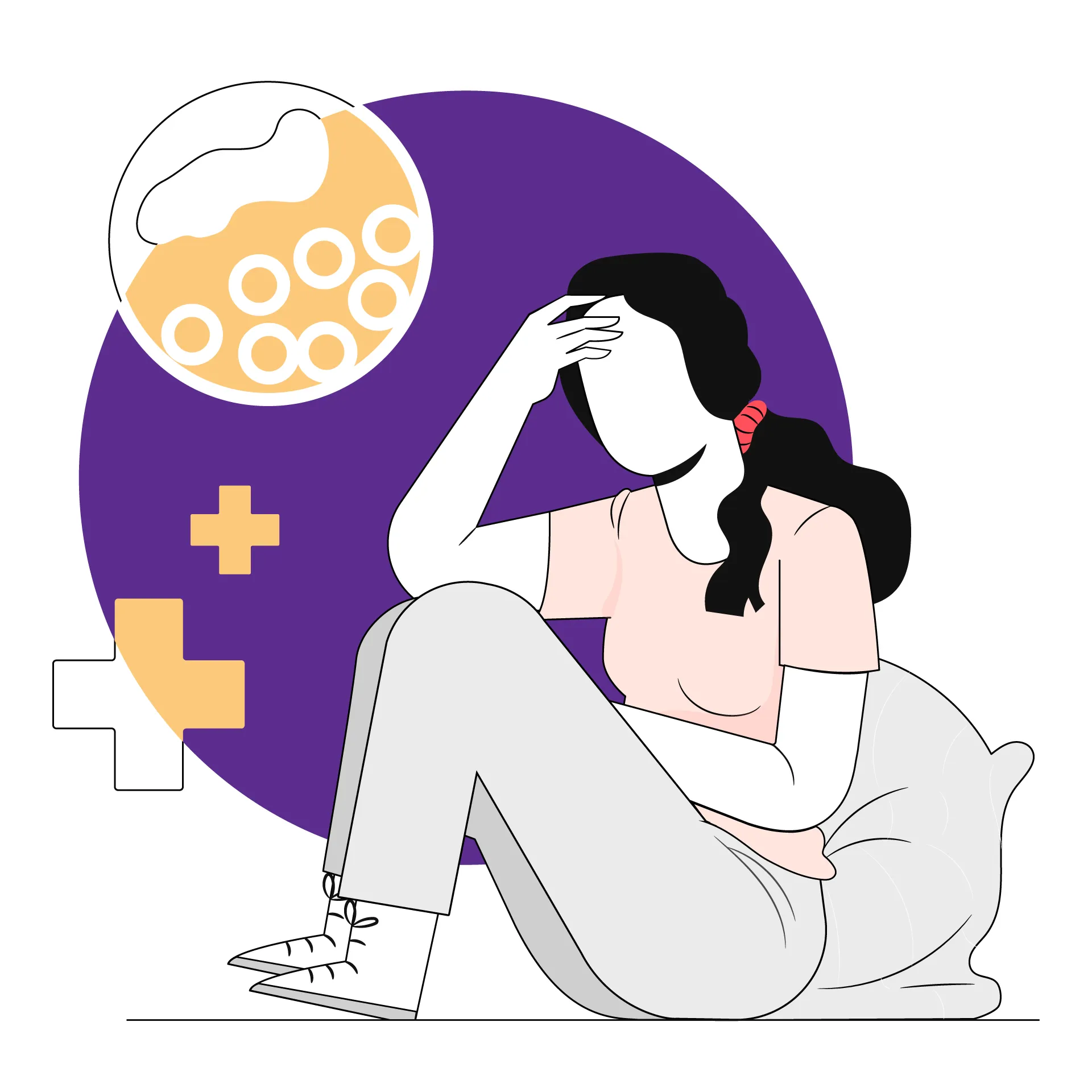Cholesterol | 4 min read
Important High Cholesterol Symptoms You Should Never Ignore!
Medically reviewed by
Table of Content
Key Takeaways
- Lipoproteins that carry cholesterol are of two types – HDL and LDL
- Signs of high cholesterol can only be determined through a blood test
- Knowing cholesterol myths and facts can help you make healthy choices
Cholesterol is vital for your body as it makes certain hormones, vitamin D, and cell membranes [1]. This waxy, fat-like substance is produced by your liver and is transported by lipoproteins in the bloodstream. Lipoproteins can be of two types – low-density-lipoproteins (LDL) or bad cholesterol and high-density-lipoproteins (HDL) or good cholesterol. High cholesterol symptoms can form plaque, which can lead to health conditions like heart diseases
Your body produces the cholesterol it needs. But you can also find cholesterol in foods such as cheese, eggs, and meat. Studies report that around 25-30% of the urban population in India has high cholesterol [2]. Read on to learn more about high cholesterol symptoms or signs of high cholesterol.
Additional read: Good Cholesterol and Bad CholesterolWhat are the signs of high cholesterol?
There are no obvious high cholesterol symptoms. However, it increases your risk of several health complications like heart disease, hypertension, and stroke. For instance, cholesterol symptoms on the skin such as soft, yellowish growth may mean increased cholesterol levels. You may also notice these signs of high cholesterol on face.
Many people experience high cholesterol symptoms in feet such as frequent tingling and pain. Similarly, obese people may have elevated levels of cholesterol too. Arteries affected by high blood cholesterol may even cause impotence in men.
The plaque formed in your arteries due to high cholesterol can lead to severe complications. It reduces your blood flow by narrowing or blocking the arteries. A blood test is the only way to determine if you have high cholesterol. Doctors may also advise you to check cholesterol if your family members have high cholesterol.
If you have hypertension, are overweight, or smoke, make sure you to take the test. Go for a cholesterol test regularly if you are above 20 years. Check your cholesterol every 4 to 6 years. If your cholesterol increases beyond 240 mg/dL, it is considered high.

Here are some conditions with certain symptoms that may help you understand the signs of high cholesterol.
Genetics
Familial hypercholesterolemia is a condition passed through genes [3]. You are sure to have high cholesterol levels of 300 mg/dL or above if you have this condition. This genetic condition is responsible for causing high cholesterol symptoms on the skin. People with this condition may have a lump or yellow patch on the skin known as xanthoma.
Heart attack
The buildup of plaque caused by high cholesterol affects the arteries that supply blood to the heart. It narrows or restricts the blood supply. When a plaque breaks, it forms blood clots. These clots block blood supply to the heart, depriving your heart of oxygen and other essential nutrients for its proper functioning.
When a heart gets damaged due to lack of oxygen, it is known as a heart attack. Here are some signs of heart attack:
- Anxiety
- Nausea
- Dizziness
- Heartburn
- Indigestion
- Extreme fatigue
- Breathing difficulties
- Aches or pain in the chest or arms
- Tightness or squeezing in arms or chest
- Heart disease
Some symptoms of coronary artery disease include:
- Fatigue
- Nausea
- Numbness
- Breathlessness
- Angina or chest pain
- Neck, jaw, or back pain
Peripheral arterial disease (PAD)
PAD occurs when the blood flow to the arms, legs, feet, and kidneys gets blocked. This happens due to the buildup of plaque in the walls of the arteries. Here are some early and serious signs of this condition:
- Aches
- Fatigue
- Cramps
- Blue or thick toenails
- Ulcers on legs and feet
- Burning sensation in toes
- Decreased hair growth on legs
- Reduced leg or foot temperature
- Discomfort in the legs and feet
- Leg pain during exercise or activity
- Paleness and thinning on the skin of your legs
- Gangrene -- death of tissue due to lack of blood supply
- Stroke
A stroke caused by the buildup of plaque due to signs of high cholesterol needs immediate medical attention. Here are some symptoms of stroke you should be careful about:
- Dizziness
- Confusion
- Numbness on one side of the body
- Blurred or double vision
- Severe headache
- Slurring words
- Loss of balance
- Decreased movement
- Facial asymmetry
Make lifestyle changes and follow a healthy cholesterol diet plan if you have high levels of cholesterol. Such a plan usually asks you to reduce the amount of saturated fat and trans fat in your meals. Instead, doctors ask you to switch to beans, fruits and whole grains that have soluble fiber. To get the right advice on this, book an online doctor consultation in seconds on Bajaj Finserv Health. You can also book lab tests such as a lipoprotein (a) blood test or a lipid profile test to check your cholesterol levels here.
References
- https://medlineplus.gov/cholesterol.html
- https://www.ncbi.nlm.nih.gov/pmc/articles/PMC5485409/
- https://medlineplus.gov/ency/article/000392.htm
Disclaimer
Please note that this article is solely meant for informational purposes and Bajaj Finserv Health Limited (“BFHL”) does not shoulder any responsibility of the views/advice/information expressed/given by the writer/reviewer/originator. This article should not be considered as a substitute for any medical advice, diagnosis or treatment. Always consult with your trusted physician/qualified healthcare professional to evaluate your medical condition. The above article has been reviewed by a qualified doctor and BFHL is not responsible for any damages for any information or services provided by any third party.






